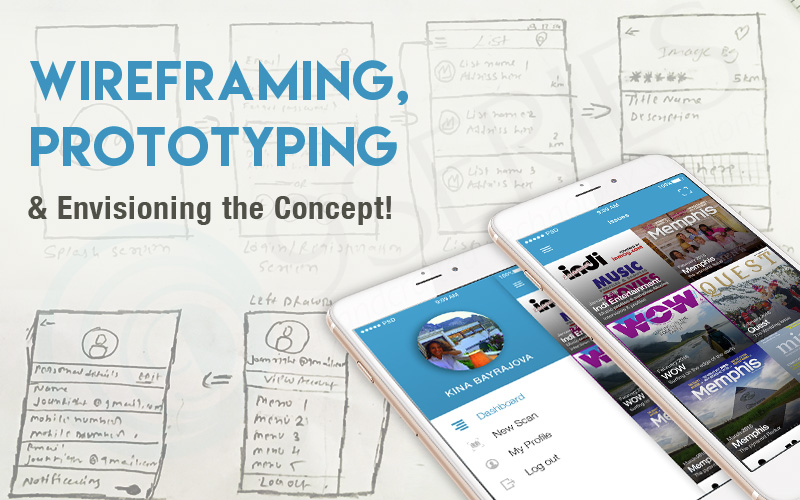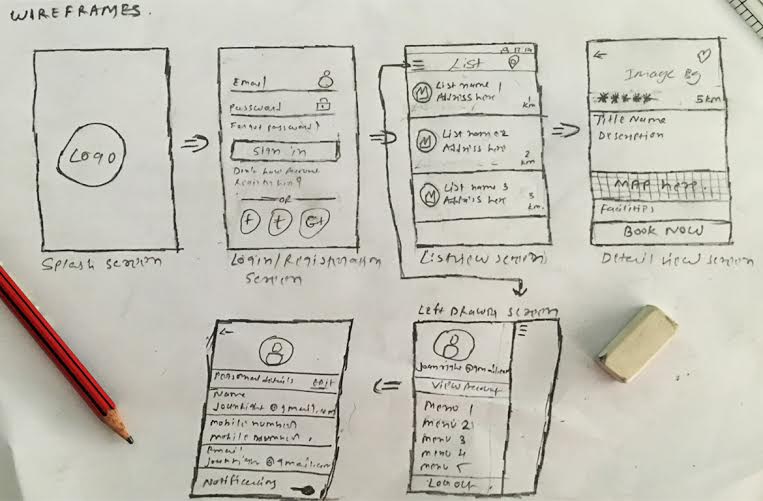Wireframing, Prototyping and Envisioning the Concept!
The wireframe and prototype are diverse in light of the fact that they utilized correspondingly. They look unequal and are implied for various vital. Occasionally a project will just need a wireframe, while at outstanding it will require a prototype.
In this article, we will talk about wireframe & prototype in a nutshell, so people can get an exact idea of what to use in specific situations.
What is a Wireframe?
In UI/UX design, a wireframe refers to a static harbinger to an actual design. It’s essentially a harsh slashed hand drawing on a bit of paper, that gives you a low-fidelity representation of your app. Basically, it’s the root of your design. It needs to incorporate imperative bits of your future application or product.
Wireframes reveal enough detail however make a basic representation plan that guides the project and its fellow team members.
A creative wireframe:
- Visualize the basic aspect of a web page
- Develop and refine quickly
- Non interactive
It should clearly visualized:
- The main groups of content (what?)
- Information and basic visualisation of the user – interface interaction (how?)
- The structure of data (where?)
Wireframes are not just an aimless bunch of grey boxes, though they may look exactly similar. Offer thought to them as the key-stone of your design and remember that wireframes ought to convey a representation of each imperative piece of the final application or product.
Wireframes are generally practiced as the documentation of the project. Once a wireframe starts becoming influencing, it becomes a prototype.
What is a Prototype?
A prototype is next level of implementation compared to wireframe. It encapsulates middle to high fidelity representation of the application or product, which reproduce user interface interaction.
A prototype is a visual layout of website/application utilizing of colors, type, and images helps to create the final web/application look and feel. It comprises of creating a user experience of the website/application in the form of interactivity. It might not look same alike the final application or product, however, can be indistinguishable.
It should permit the user to:
- Experience content and interactions with the interface
- Check the main interactions in a way similar to the final application or product.
A well-done prototype:
- Interactive
- Model the user experience
- Enable extensive user testing
A prototype is an impeccable material to test the usability of the interface before the application or product starts, it may or may not contain the real data.
It helps to visualize overall concept in depth; if design & prototyped appropriately, it saves development effort upto 30%.
Recent Posts
Deep Learning Explained: Understanding the Brain Behind AI
The Intersection of AI and IoT: Creating Smarter, Connected Environments
The Evolution of AI: From Simple Algorithms to Neural Networks
The Role of AI in Sustainable Development
Scaling New Heights: Integrating Advanced Technologies in Startup Product Engineering


